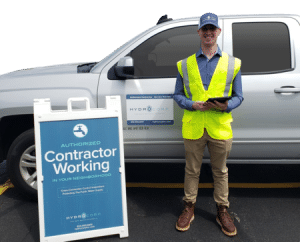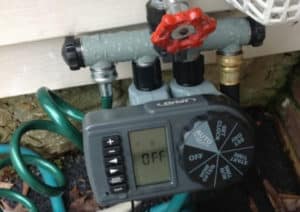A cross-connection is an actual or potential connection between the safe drinking water (potable) supply and a source of contamination or pollution. State plumbing codes require approved backflow prevention methods to be installed at every point of potable water connection and use. Cross-Connections must be properly protected or eliminated.
Residential Cross-Connection Control Survey | Exterior from HydroCorp on Vimeo.
An average inspection normally takes from 10 to 20 minutes, depending on the size of your home/property.
Yes. We just need a name and number so that the inspector can contact you to set up a time that is convenient for you.
If you are the owner of the home being inspected, you are responsible for any needed repairs. Renters may have to refer to their lease agreements in order to determine whether they are responsible for repairs.
All HydroCorp inspectors wear photo ID badges during inspections and are prepared to provide appropriate documentation verifying their identities.

Yes. These inspections are conducted in order to ensure compliance with state regulations to maintain the safety of your drinking water.
Penalties for refusing to cooperate with inspections and/or refusing to make needed repairs are determined by your local water utility. These typically can include termination of water service, a fine, or both.
The anti-siphon fill valve device is located in the tank of your toilet. This device has a dual purpose: To fill the toilet and prevent backflow. This device must be placed at the proper height in order to insure that water from your toilet does not backflow into your drinking water. Proper placement is typically done during the installation process but can be easily overlooked. This device must be raised or the overflow pipe must be cut down in order to achieve a 1” air gap separation between the “critical level” of the assembly.
Click here to see an installation diagram.
Click here for 3 minute video overview.
Residential Cross-Connection Control Survey | Exterior from HydroCorp on Vimeo.
Example: Hose connection vacuum breakers |
Example: Integrated vacuum breaker on outside hose spigot. |
Example: Hose end in bucket |
Example: Hose end in pool |
 |
Vacuum breaker should not be subject to continuous pressure like the example here illustrates. (This type of irrigation set up/system would need to be corrected.) |
These require periodic performance testing by a Certified Tester.
Pressure Vacuum Breaker Assembly |
Reduced Pressure Principle Backflow Prevention Assembly |
5700 Crooks Road, Suite 100 • Troy, MI 48098 • 844-493-7641
Copyright© 2020 HydroCorp • All rights reserved.
Website & SEO By: MI Digital Solution